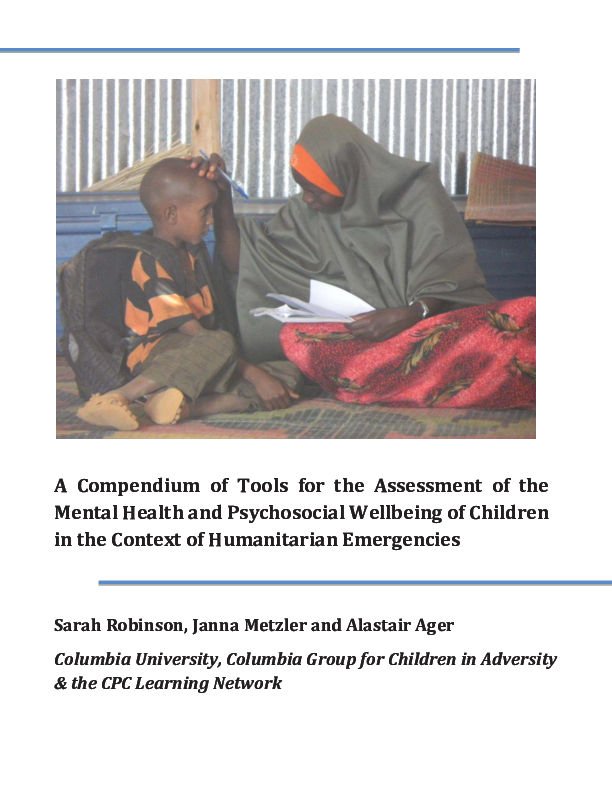
Manuals, Toolkits and Guidance
A Compendium of Tools for the Assessment of the Mental Health and Psychosocial Wellbeing of Children in the Context of Humanitarian Emergencies
Publication year:
2014
English
Format:
(693.9 KiB)
Publisher:
Child Resilience Alliance,The CPC Network, Child Protection in Crisis
This compendium seeks to assist practictioners in navigating the challenges associated with selecting a measurement strategy for the assessment of the mental health and psychosocial wellbeing of children in humanitarian emergencies. There is wide concern that adoption of reliable measurement instruments by a skilled external research team for a short period risks an ‘extractive’ form of data collection wildly disconnected from local priorities and concerns (that is, fails to establish cultural validity). Equally hazardous, however, are strategies that engage in valuable participative work in communities, but fail to pay attention to establishing the reliability of findings in a robust manner. Further, a measure may be culturally valid and reliable, but the length of time and technical support required for its use may make it unfeasible to implement in many humanitarian contexts, particularly those involving rapid onset emergencies.
The decision-making guide presented in this compendium suggests the questions that need to be asked to identify a tool or approach suited to a particular circumstance.
- Answer the prompt questions to the left of the diagram to identify the required focus (assessing individuals to guide specific interventions; assessing overall group- or population-level needs; or structuring relevant participatory activities); the required scope (e.g. whether the measure is suited to assess mental health, broader psychosocial wellbeing, or both); and the age range of children concerned.
- Drawing upon the details tabulated in the Index, list the pool of potential measures suited to your answers.
- Review the details for each measurement tool or approach in this pool.
- Select a promising measure from the list and follow through the questions indicated for the ‘Using or Adapting Existing Measure Route’, repeating this loop as many times as necessary to identify a valid, reliable and feasible measure for use.
- Consider the prompts for the ‘Developing Local Measure Route’ to identify an alternative or complementary strategy.
Read full abstract
Authors
View & Download
Document information
Authors
Content type
Rights
© Author/Publisher
Keywords
Found a mistake? Help us improve!
If you have noticed a document assigned to the wrong author or any other inaccuracies, let us know! Your feedback helps us keep our data accurate and useful for everyone.
Share
Link

